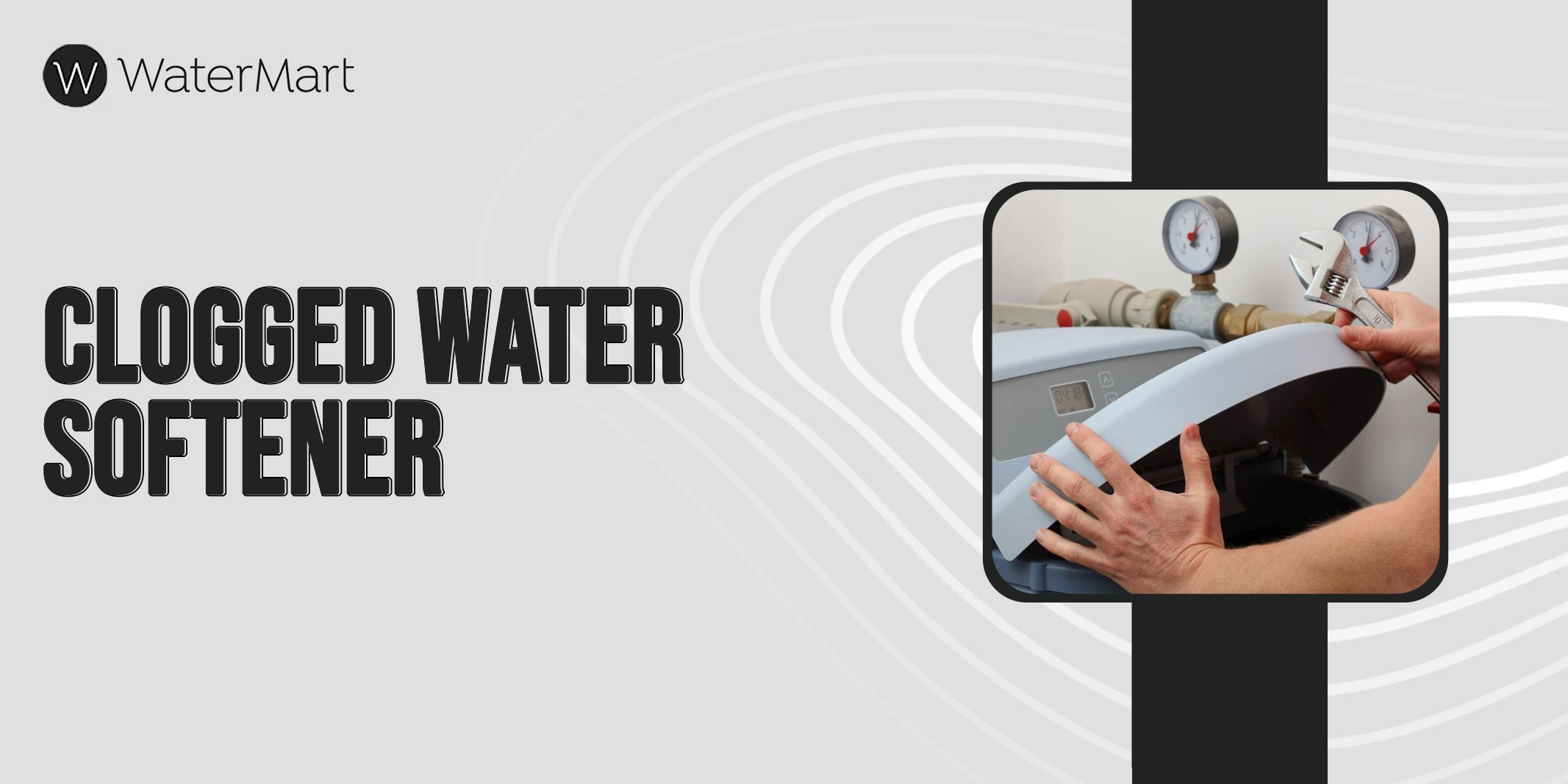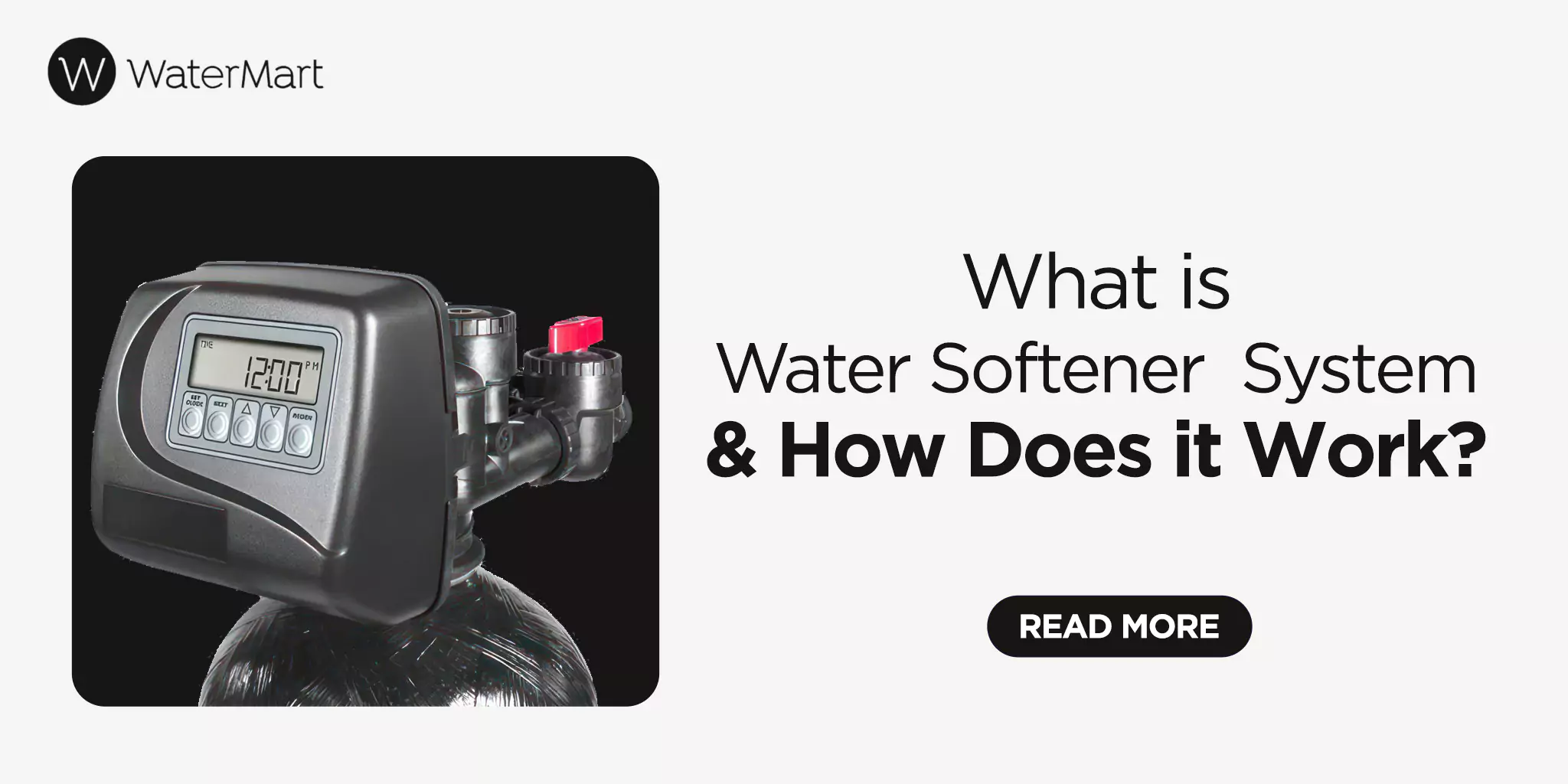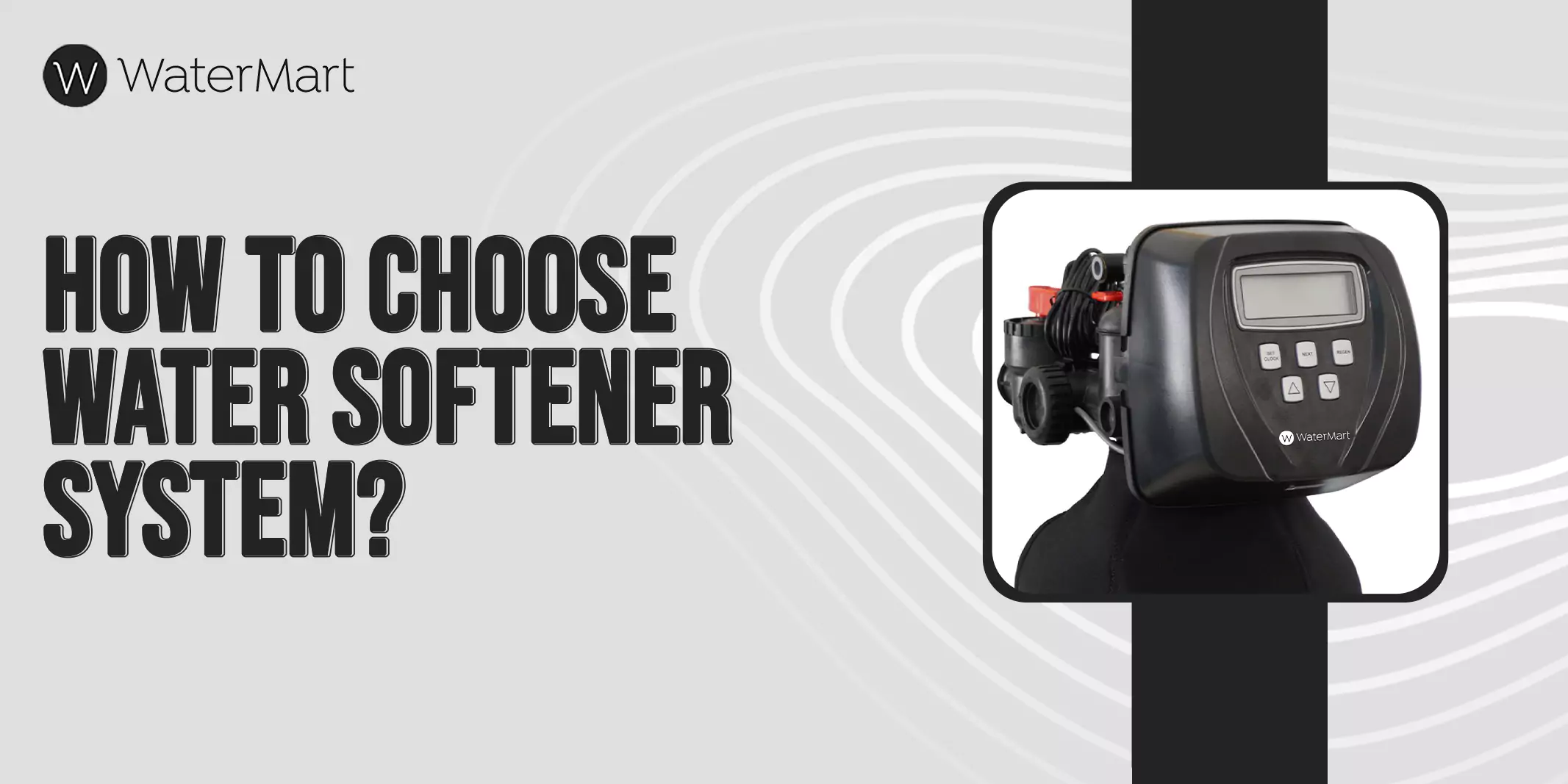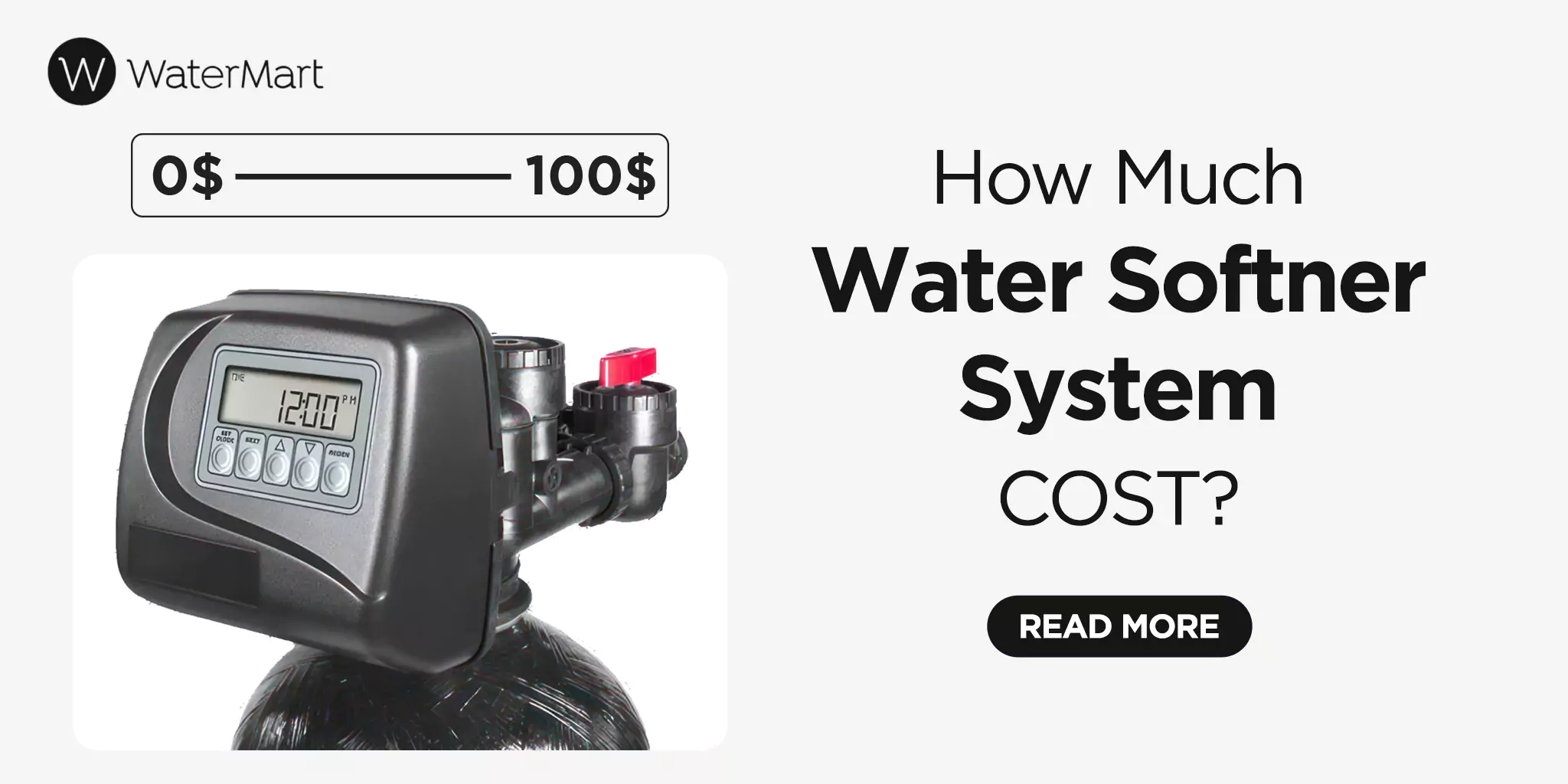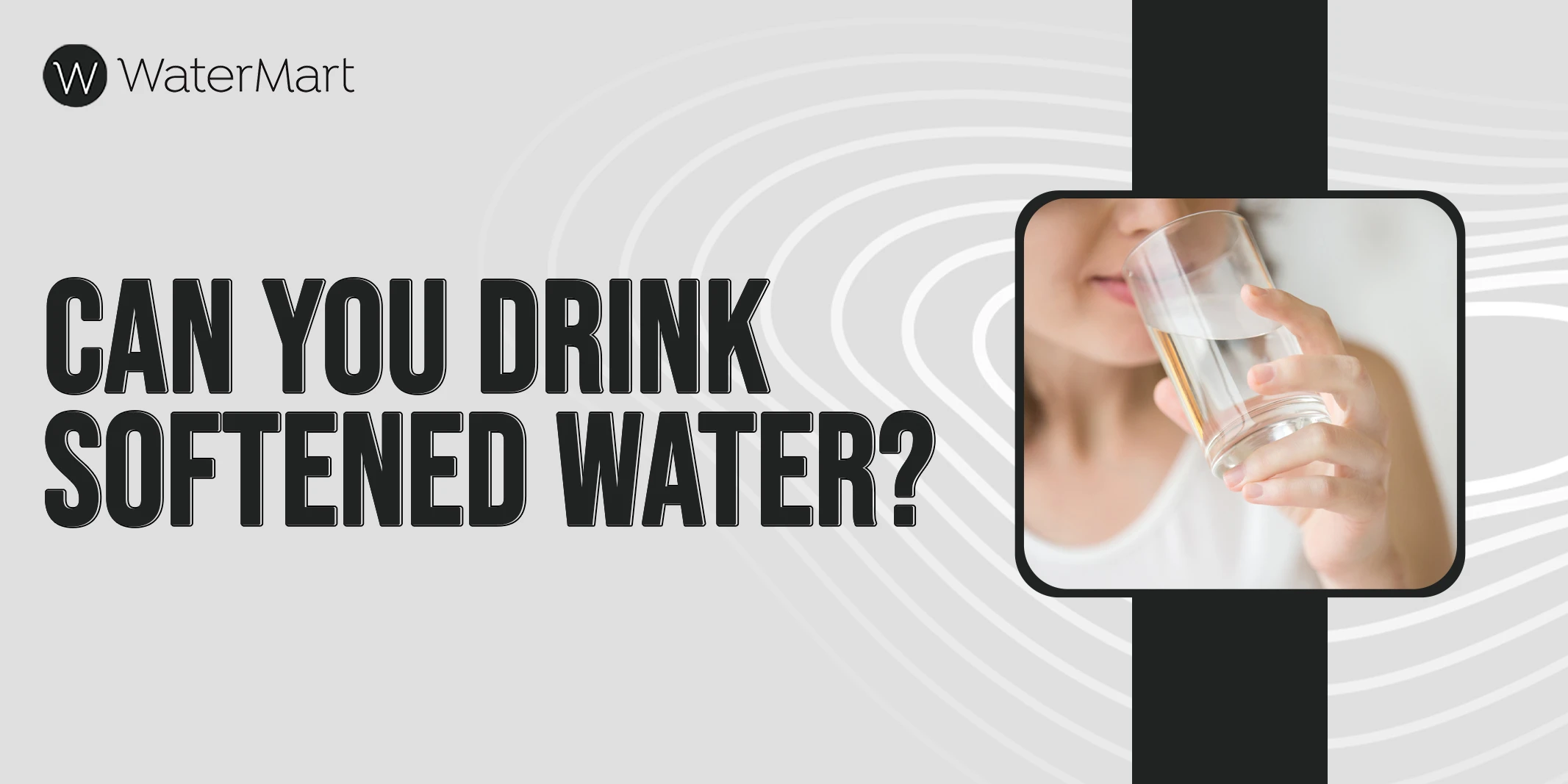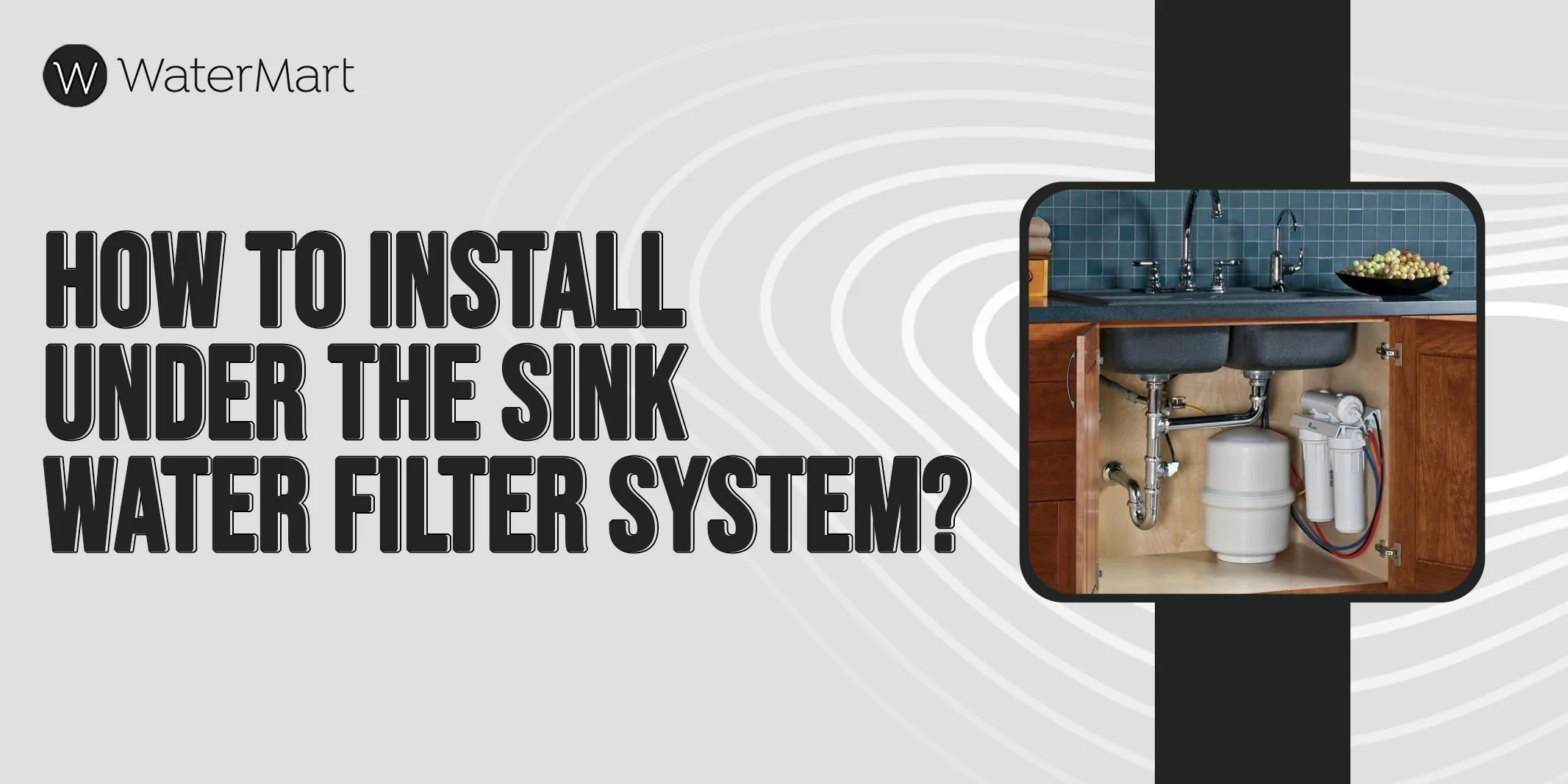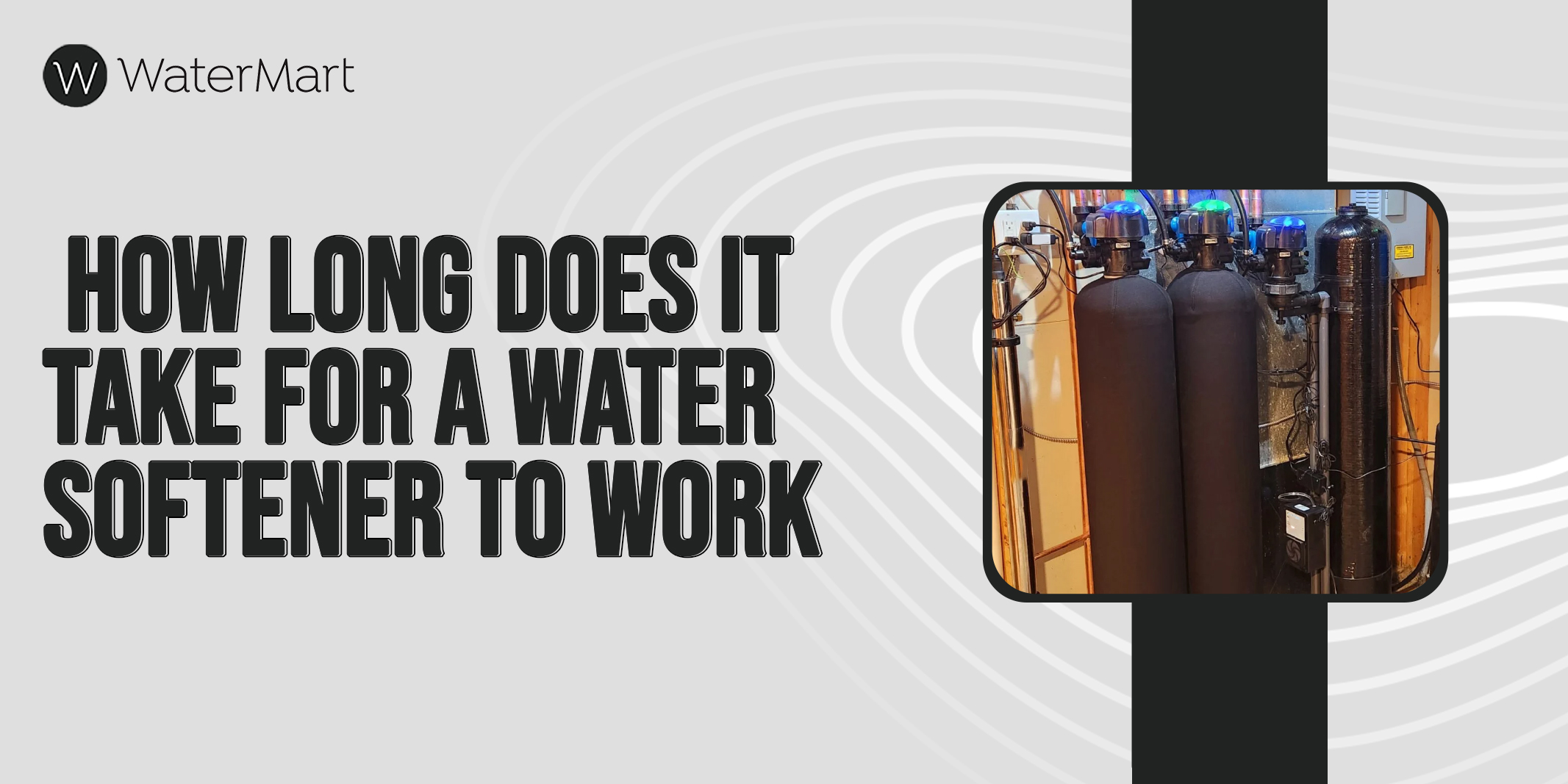Your cart is currently empty!
Water Softener Clogged—What Should You Do?
A clogged water softener is as good as a malfunctioning water softener. That’s because it reintroduces hard water into your home and also, the menace it brings, including soap scum, limescale buildup, and brittle, frizzy hair.
And worst of all, when you kneel to check the brine tank, you find it overflowing with water. The high water level in your water softener indicates that your water softener is clogged. You may wonder, “Is my water softener clogged?” If yes, “What should you do?”
In this article, we’ll answer all of your questions related to a clogged water softener and the ways to deal with the clog.
Read on!
Water Softener Clogged? How To Diagnose The Exact Problem
If you find out that your water softener is clogged, it’s time to dig deeper and find out the main cause behind the problem.
That’s because before starting to treat the problem, it’s important to diagnose it first. In order to do this, you need to understand how a water softener works. Suppose your water softener is clogged because of the big chunks of salt in the brine tank. And instead of treating the salt bridge, we end up cleaning the mineral buildup. Therefore, it’s crucial to diagnose the exact problem to avoid any major inconvenience.
This is how to diagnose the exact problem:
- Take a flashlight and open up your brine tank.
- The water softener is usually clogged due to two main reasons: salt bridge and mineral buildup. Locate the main issue.
- Follow the troubleshooting steps in your user manual and enjoy your soft water.
If the problem persists, or if you do not have any plumbing experience, you can always schedule a call with the professionals.
How To Fix a Clogged Water Softener
Facing hard water problems again? Don’t worry. It might be a minor salt clog that is affecting your softener’s efficiency.
Here’s what to do to fix your water softener.
Salt Clog
One of the most common types of water softener clogging is the salt clog. Since salt is the main ingredient in your brine tank to clean the resin beads, it can sometimes react with moisture and other conditions to form salt bridges.
If your water softener is clogged due to a salt bridge, you don’t need to call a professional.
Here’s a simple DIY process to help you unclog the softener.
- Open your brine tank.
- Take a mop or a broom and break the salt bridge in the center.
- Scoop out the big and small chunks of salt to clean the brine tank.
- To thoroughly clean the tank, pour some hot water to dissolve the salt around the edges.
- Once the clog is gone, fill up the brine tank and add new salt pellets as per your user manual’s guidelines.
Clogged Pipes
If the pipes are clogged, the water level in your brine tank is usually higher than it should be.
To fix this, clean the valve injector to allow suction during the brine cycle for your regeneration process. Simply take the injector out and look through the hole. If you cannot see anything, take a pin or needle and clean it properly.
Clogged Drains
Clogged drains happen due to clogged control valves. It usually happens when you receive high iron levels at home.
One of the main signs your water softener is not working properly is an overflowing brine tank. If that occurs, clean the control valve, and your water softener should be good to go!
Common Reasons And Solutions Of Clogged Water Softener
Sometimes, neither the salt clogs nor the drain and pipe clogs are the reasons. To thoroughly diagnose the problem, you must locate the source of the problem.
Here are a few reasons your water softening isn’t working properly due to clogging.
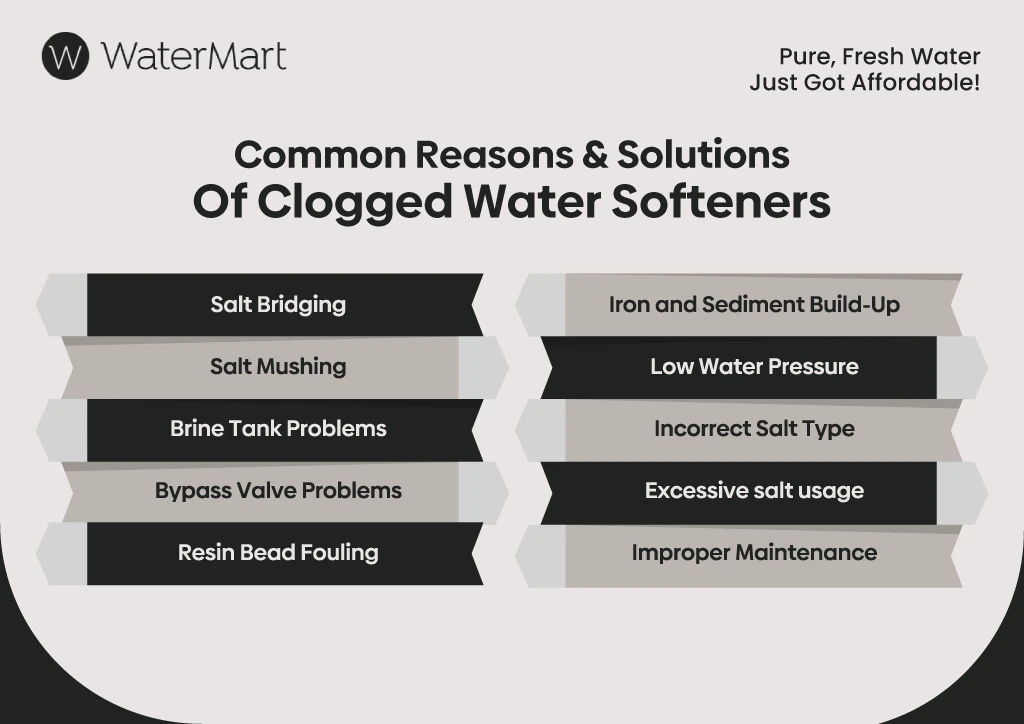
Salt Bridging
Salt bridging is the most common clogging issue in your water softener. It occurs when salt is hardened into a crystallized form in your brine tank. As a result, it blocks the water flow and proper dissolving of salt, which may lead to regeneration issues.
Treating salt bridging is easy. Just take any object with a long handle, such as a mop or a broom, and tap it gently on the hardened salt to break it into smaller pieces. Later, clean the tank and fill up your brine tank with recommended salt levels.
Salt Mushing
Just like salt bridging, the main culprit behind salt mushing is high humidity levels. Mushy salt creates a water flow blockage and hinders your regeneration process. The main causes of salt mushing are humidity, incorrect salt type, and low-quality salt that messes with your water softener.
To treat salt mushing, clean the brine tank and remove the sludge. Add the recommended amount of salt and store your salt in a cool, dry place in an airtight container to prevent clumping.
Brine Tank Problems
Sometimes, a leaking or cracked brine tank can cause havoc in your water softener. It allows foreign objects to enter the brine tank, creating the clog.
Additionally, an overflowing brine tank may cause clogging due to malfunctioning float valves, incorrect salt type and dosage, and a simple clog in the drain.
To address this issue, check out the float valves and adjust the salt type and salt amount according to your water hardness levels. Also, check the drain line for potential blockages and clear them if necessary.
Please contact a professional if dismantling the components is involved, especially if you have no plumbing experience.
Bypass Valve Problems
If your bypass valve is faulty, the water doesn’t flow properly through, impacting the efficiency of your water softener. It’s recommended to contact professionals to diagnose any signs of bypass valve damage and provide solutions in terms of replacement or repair, if necessary.
Resin Bead Fouling
Resin beads are essential to keep your regeneration cycle running smoothly. However, over time, mineral build-up can pollute the resin beads with debris, dirt, and other contaminants and reduce their efficiency. It adversely affects the water quality and softening capacity of your softener.
To treat this issue, perform a resin bed cleaning treatment following the manual’s guidelines. Or, best, contact a professional to clean and replace the beads so your water softener works efficiently.
Iron and Sediment Build-Up
If there’s staining around your softener and a rusty odor or taste, there are high levels of iron and sediment in your water.
To address this issue, test your water for iron and sediment levels and use Iron-out salt for optimal performance.
Low Water Pressure
Low water pressure is a result of clogged pipes, faulty pressure-reducing valves, or a faulty water softener. As a result, it hinders the regeneration cycle and leads to clogs.
To address these issues, check the main water pressure and, after passing through the softener, if the pressure change is significant, clean the resin beads.
Though these fixes can be DIY-ed at home, it’s important to consult a water softening expert to rule out any potential risks and damages to your water softener.
Incorrect Salt Type
A water-softening salt should be of high purity and compatible with the make and model of your water softener.
To know the right type of salt, consult your user manual or ask a professional for assistance.
Using the wrong type and amount of salt can lead to many issues, including salt bridging, ineffective resin bead regeneration, and inefficient performance.
It’s recommended to use the right type of salt that is designed for water softeners and your hardness levels.
Excessive salt usage
If your water softener consumes more salt than it should, there could be an issue. Consult an expert and check out the brine tank float, salt dosage setting, or regeneration cycles to rule out the main problem.
Improper Maintenance
Like any other electrical appliance, regular maintenance and upkeep of your water softener are essential to keep it running smoothly.
You should:
- Clean the brine tank.
- Clean the resin bed and replace the resin beads when necessary
- Carry out thorough system checks at least every 3 months
What to Do If You Cannot Diagnose or Solve the Problem
Many times, even after several troubleshooting attempts, the clogs just won’t go away, and the problem persists. Fret not!
Water softener is a tough nut to crack, and there’s no shame in calling in a professional.
Qualified water softener technicians have the right skills, tools, and knowledge to do their job and tackle stubborn clogs, providing useful tips and ensuring your water softener is back in action.
Always remember that a timely consultation with your professional water softener expert saves you tons of time, money, and unnecessary frustration.
Get Our Water Softener Cleaning and Maintenance Service Today
DIY fixes can be time-consuming and overwhelming. Worst of all, if they don’t work, you might need some other major fixes. Therefore, it’s important to trust the services of a professional specialist.
At WaterMart Toronto, you can get comprehensive water cleaning and maintenance services at your doorstep. Our team of certified experts is well-acquainted and informed to diagnose any clogs or system malfunctions—Whether it’s a routine salt bridge or a stubborn resin beads issue, WaterMart has got you all covered!
Besides water softener installation, we also provide routine maintenance checks to ensure optimal performance of your water softener weekly, monthly, or yearly. Our team of experts offers expert advice on how to choose the right water softener for your water needs, with a steady installation process.
Don’t know whether you want to purchase a water softener or a water filtration system? Schedule our FREE water testing services to know now!
Do You Know How to Fix a Clogged Water Softener
If your hard water is making a comeback ruthlessly, you probably have a clogged water softener. But before you start anything else, it’s important to carefully inspect the issue and diagnose the problem. Only then will you be able to find a viable solution.
Most of the time, there are two major causes of a clogged water softener:
- Salt bridge
- Mineral buildup
However, many other factors also contribute to a clogged water softener, such as salt mushing, bypass valve problems, low water pressure, and improper maintenance of your softener.
Whatever the cause is, you may try to fix an unclogged water softener following the DIY tips in this article. However, if something gets serious and the problem persists, feel free to call WaterMart for reliable water softening solutions.
FAQS
Q: Why is water not flowing through a water softener?
When the water isn’t flowing through the water softener, there might be clogs in the bypass valve, pipes, or control valves.
Q: Why is my water softener not draining?
If draining is the issue, check the drain line or inspect the control valve thoroughly for any clogs.
Q: Why is my water softener not filling with water?
Several factors contribute to your water softener not filling with water. For example, a closed shut-off valve, low water pressure, and a faulty timer.
Q: How do you know if you have a salt clog in your water softener?
One of the major signs of a salt clog is an overflowing brine tank. Also, a telltale sign of a salt clog in a water softener is hard, crystallized salt at the bottom of your brine tank.
Q: How to reset the water softener?
You can either restart your control unit or do a complete factory reset and erase all the settings to return to its default settings. Consult your user manual for resetting your water softener.
